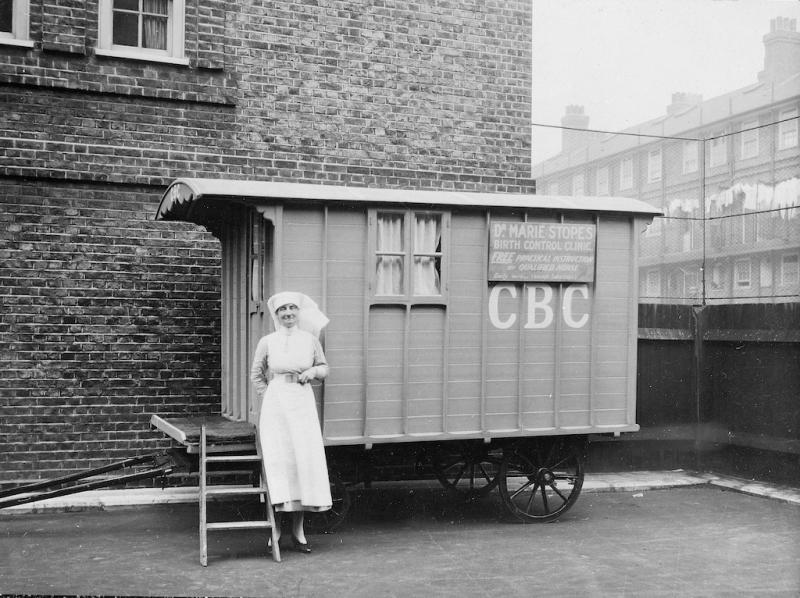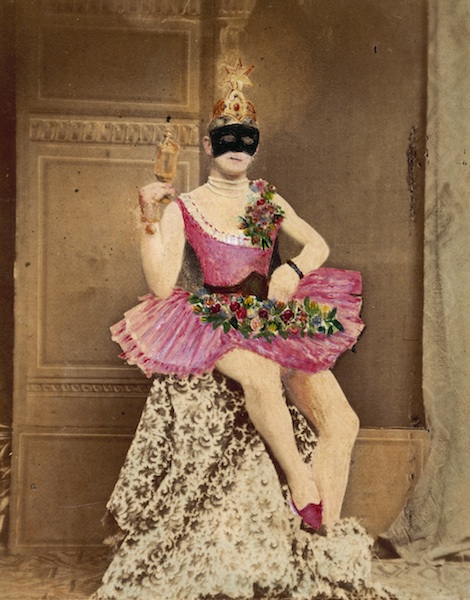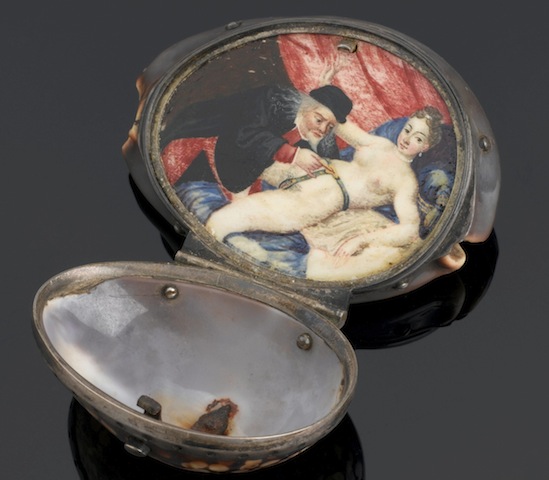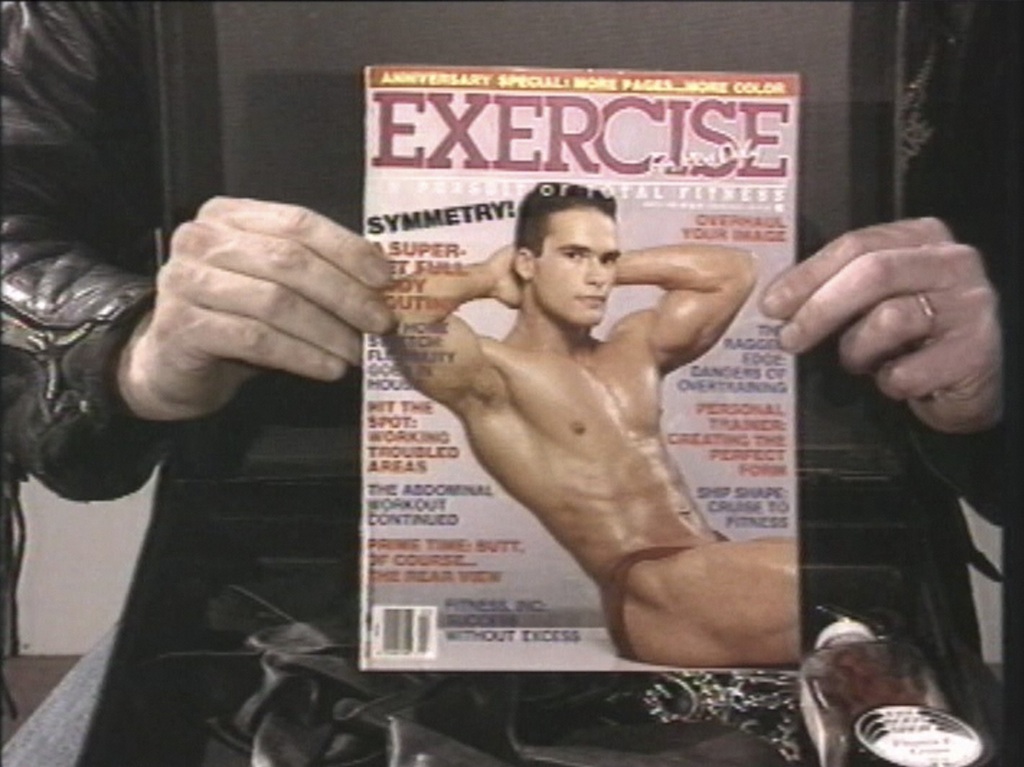The Institute of Sexology, Wellcome Collection | reviews, news & interviews
The Institute of Sexology, Wellcome Collection
The Institute of Sexology, Wellcome Collection
On the men and women who spent their lives researching sex

There is nothing erotic or titillating about The Institute of Sexology, an exhibition the Wellcome Collection plans to keep open for a year. Those expecting a display of fertility symbols, fetish objects, kinky clothing or sex aids down the ages will be deeply disappointed.
And therein lies the problem. The exhibition format makes it impossible to do justice to the work of these experts; so you have to be content with snippets of information that, at best, might prompt you to do some further research. A photo of the Berlin library of sexologist Magnus Hirschfeld, taken in 1933 after it had been trashed by government-sanctioned rioters, introduces the topic of sexual “deviance” and the acceptance or suppression of difference. Hitler’s attack was provoked by Hirschfeld’s efforts to seek justice for people being persecuted for their sexual preferences.
 Begun in 2006, Zanele Muholi’s portraits of black gays and lesbians in South Africa are a reminder that prejudice is still very much alive today. Gaps in the display pay tribute to those who have been killed since she photographed them.
Begun in 2006, Zanele Muholi’s portraits of black gays and lesbians in South Africa are a reminder that prejudice is still very much alive today. Gaps in the display pay tribute to those who have been killed since she photographed them.
Richard von Krafft-Ebbing had previously documented cases of “deviance”, but perhaps wisely wrote key passages of his learned tome, Psychopathia Sexualis, 1886, in Latin to prevent lay readers from accessing the information. From his collection of erotica come postcards of a masked man wearing a pink tutu (pictured left) and a woman riding a man on all fours with a bridle in his mouth.
Among the items from Henry Wellcome’s collection are some phallic bronze amulets that the Romans would have hung in doorways to ward off evil spirits, a porcelain fruit that opens to reveal a couple making love, a cowrie shell that opens to reveal a painting of a woman locked in a chastity belt (pictured below right), phallic Peruvian jugs and tiny figurines of the Egyptian god Horus portrayed as a child clutching a mountainous erection. Wellcome saw these as an indication that religions originate in phallic worship and fertility cults.
 The exhibition is divided into sections. The Consulting Room is devoted to Sigmund Freud, famous for his “talking cure”, and Marie Stopes, who advised people “not to think about your subconscious mind”, since “all the filthiness of this psychoanalysis does unspeakable harm.” Yet she was hugely influential in recognising women’s right to sexual pleasure without the burden of constant childbirth. Starting with a horse-drawn caravan (main picture), by the late 1920s she had established a nationwide network of birth control clinics and provided products like the Racial Cap, a rubber diaphragm enabling women to control their fertility. As a member of the Eugenics Society, she aimed to lower the birthrate among “undesirables”; but no matter how unpleasant her politics, her influence was incredibly liberating. She compiled a chart recording The Symptoms of Sexual Excitement in Solitude, which contains the comment, “One or two orgasms during the day, but they were clearly induced by thought, also I was experimenting in areas of sensitiveness”.
The exhibition is divided into sections. The Consulting Room is devoted to Sigmund Freud, famous for his “talking cure”, and Marie Stopes, who advised people “not to think about your subconscious mind”, since “all the filthiness of this psychoanalysis does unspeakable harm.” Yet she was hugely influential in recognising women’s right to sexual pleasure without the burden of constant childbirth. Starting with a horse-drawn caravan (main picture), by the late 1920s she had established a nationwide network of birth control clinics and provided products like the Racial Cap, a rubber diaphragm enabling women to control their fertility. As a member of the Eugenics Society, she aimed to lower the birthrate among “undesirables”; but no matter how unpleasant her politics, her influence was incredibly liberating. She compiled a chart recording The Symptoms of Sexual Excitement in Solitude, which contains the comment, “One or two orgasms during the day, but they were clearly induced by thought, also I was experimenting in areas of sensitiveness”.
The Tent looks at the work of anthropologists such as Margaret Mead who caused a stir in American when, in 1928, she published her findings revealing that Samoan girls not only masturbated but had homosexual as well as heterosexual relations. Many Americans were similarly outraged by Wilhelm Reich’s Orgone Accumulator, a chamber made from plywood, insulating board, sheet metal and fibreglass, that supposedly trapped and stored energy; a session inside the box was said to improve one’s general health and boost one’s libido. In his sci-fi comedy Sleeper, 1973, Woody Allen emerges from an Orgasmatron – a spoof on Reich’s Orgone Accumulator – in a state of ecstatic burn out.
For me, the most interesting exhibit is Richerche Three, 2013, a film made by Sharon Hayes in an all-women’s college in western Massachusetts reputed to be a hotbed of lesbianism, a claim that seemed to be borne out by the gay and transgender students she interviewed about their attitudes towards sex. But the soundtrack permeates the space to an annoying degree; I thought a debate was raging in the next room and longed for it to end.
 The exhibition ends with another reminder of the way society endeavours to control people’s sexual behaviour (and usually fails). Pedagogue (pictured above) is a film made in 1988 by Neil Bartlett and Stuart Marshall in response to Clause 28, which outlawed the promotion of homosexuality in schools and colleges. Bartlett opens his briefcase to reveal rubber gloves, underwear and a gay porn magazine, upon which both male and female students at Trent Polytechnic (now Nottingham Trent University) confess to becoming lesbians as a result of his tuition.
The exhibition ends with another reminder of the way society endeavours to control people’s sexual behaviour (and usually fails). Pedagogue (pictured above) is a film made in 1988 by Neil Bartlett and Stuart Marshall in response to Clause 28, which outlawed the promotion of homosexuality in schools and colleges. Bartlett opens his briefcase to reveal rubber gloves, underwear and a gay porn magazine, upon which both male and female students at Trent Polytechnic (now Nottingham Trent University) confess to becoming lesbians as a result of his tuition.
This absurdist parody is the nearest we get to addressing issues that are of burning importance, such as paedophilia and female genital mutilation. A debate about the degree to which the state should attempt to control the sexual behaviour of its citizens would make the exhibition feel less like a stroll down memory lane. A discussion concerning the duty of the state to protect minors from sexual predators and sexual practices which are nasty and dangerous would set the building on fire – metaphorically speaking.
Share this article
The future of Arts Journalism
You can stop theartsdesk.com closing!
We urgently need financing to survive. Our fundraising drive has thus far raised £49,000 but we need to reach £100,000 or we will be forced to close. Please contribute here: https://gofund.me/c3f6033d
And if you can forward this information to anyone who might assist, we’d be grateful.

Subscribe to theartsdesk.com
Thank you for continuing to read our work on theartsdesk.com. For unlimited access to every article in its entirety, including our archive of more than 15,000 pieces, we're asking for £5 per month or £40 per year. We feel it's a very good deal, and hope you do too.
To take a subscription now simply click here.
And if you're looking for that extra gift for a friend or family member, why not treat them to a theartsdesk.com gift subscription?
more Visual arts
 'We are bowled over!' Thank you for your messages of love and support
Much-appreciated words of commendation from readers and the cultural community
'We are bowled over!' Thank you for your messages of love and support
Much-appreciated words of commendation from readers and the cultural community
 Folkestone Triennial 2025 - landscape, seascape, art lovers' escape
Locally rooted festival brings home many but not all global concerns
Folkestone Triennial 2025 - landscape, seascape, art lovers' escape
Locally rooted festival brings home many but not all global concerns
 Sir Brian Clarke (1953-2025) - a personal tribute
Remembering an artist with a gift for the transcendent
Sir Brian Clarke (1953-2025) - a personal tribute
Remembering an artist with a gift for the transcendent
 Emily Kam Kngwarray, Tate Modern review - glimpses of another world
Pictures that are an affirmation of belonging
Emily Kam Kngwarray, Tate Modern review - glimpses of another world
Pictures that are an affirmation of belonging
 Kiefer / Van Gogh, Royal Academy review - a pairing of opposites
Small scale intensity meets large scale melodrama
Kiefer / Van Gogh, Royal Academy review - a pairing of opposites
Small scale intensity meets large scale melodrama
 Jenny Saville: The Anatomy of Painting, National Portrait Gallery review - a protégé losing her way
A brilliant painter in search of a worthwhile subject
Jenny Saville: The Anatomy of Painting, National Portrait Gallery review - a protégé losing her way
A brilliant painter in search of a worthwhile subject
 Abstract Erotic, Courtauld Gallery review - sculpture that is sensuous, funny and subversive
Testing the boundaries of good taste, and winning
Abstract Erotic, Courtauld Gallery review - sculpture that is sensuous, funny and subversive
Testing the boundaries of good taste, and winning
 Edward Burra, Tate Britain review - watercolour made mainstream
Social satire with a nasty bite
Edward Burra, Tate Britain review - watercolour made mainstream
Social satire with a nasty bite
 Ithell Colquhoun, Tate Britain review - revelations of a weird and wonderful world
Emanations from the unconscious
Ithell Colquhoun, Tate Britain review - revelations of a weird and wonderful world
Emanations from the unconscious
 Rachel Jones: Gated Canyons, Dulwich Picture Gallery review - teeth with a real bite
Mouths have never looked so good
Rachel Jones: Gated Canyons, Dulwich Picture Gallery review - teeth with a real bite
Mouths have never looked so good
 Yoshitomo Nara, Hayward Gallery review - sickeningly cute kids
How to make millions out of kitsch
Yoshitomo Nara, Hayward Gallery review - sickeningly cute kids
How to make millions out of kitsch
 Hamad Butt: Apprehensions, Whitechapel Gallery review - cool, calm and potentially lethal
The YBA who didn’t have time to become a household name
Hamad Butt: Apprehensions, Whitechapel Gallery review - cool, calm and potentially lethal
The YBA who didn’t have time to become a household name

Add comment